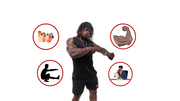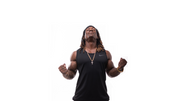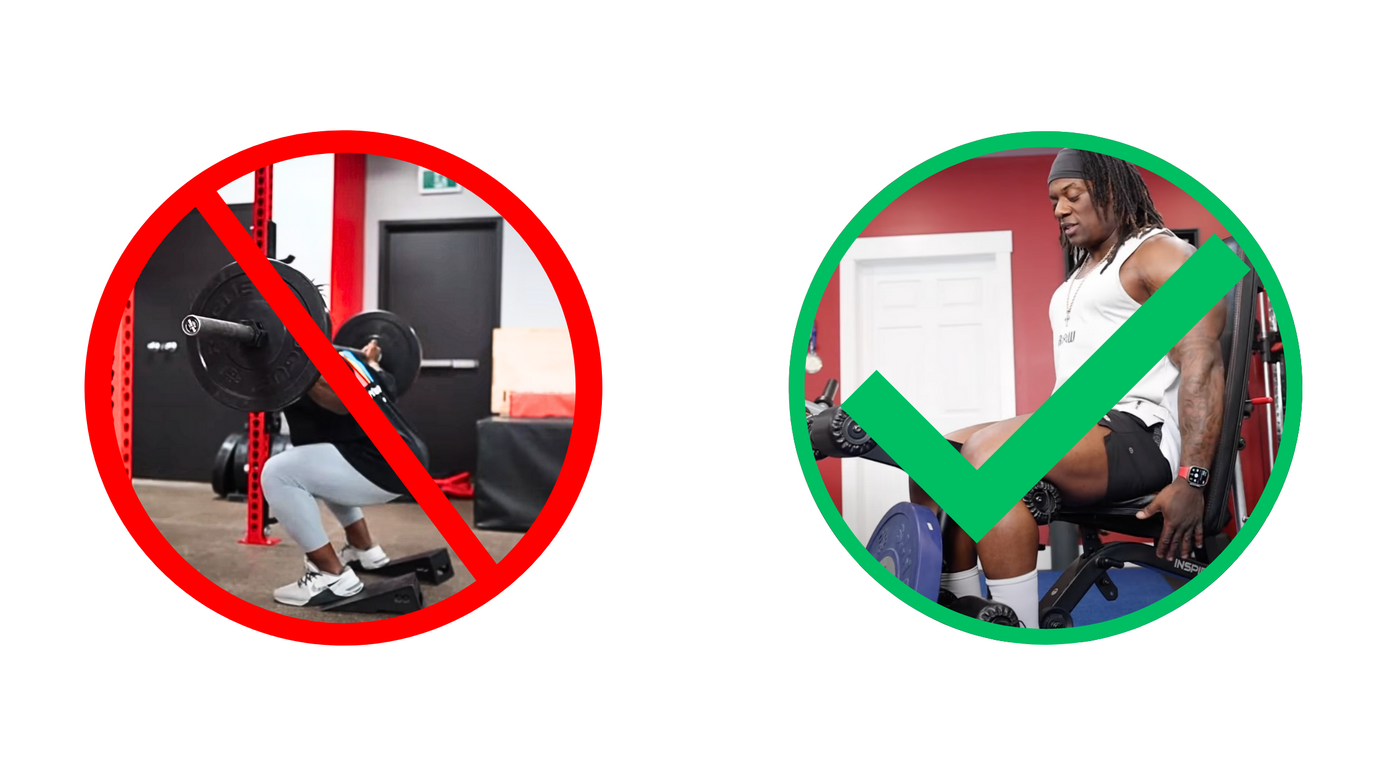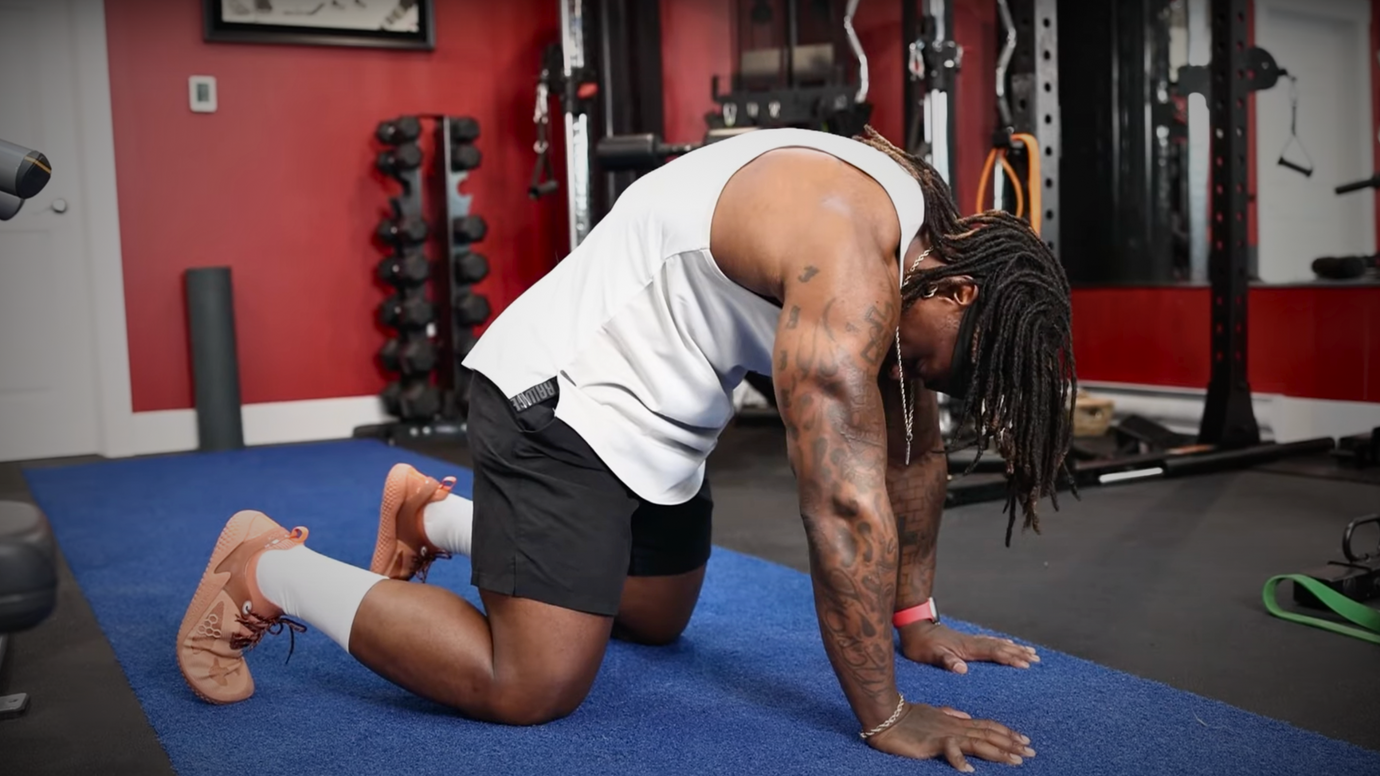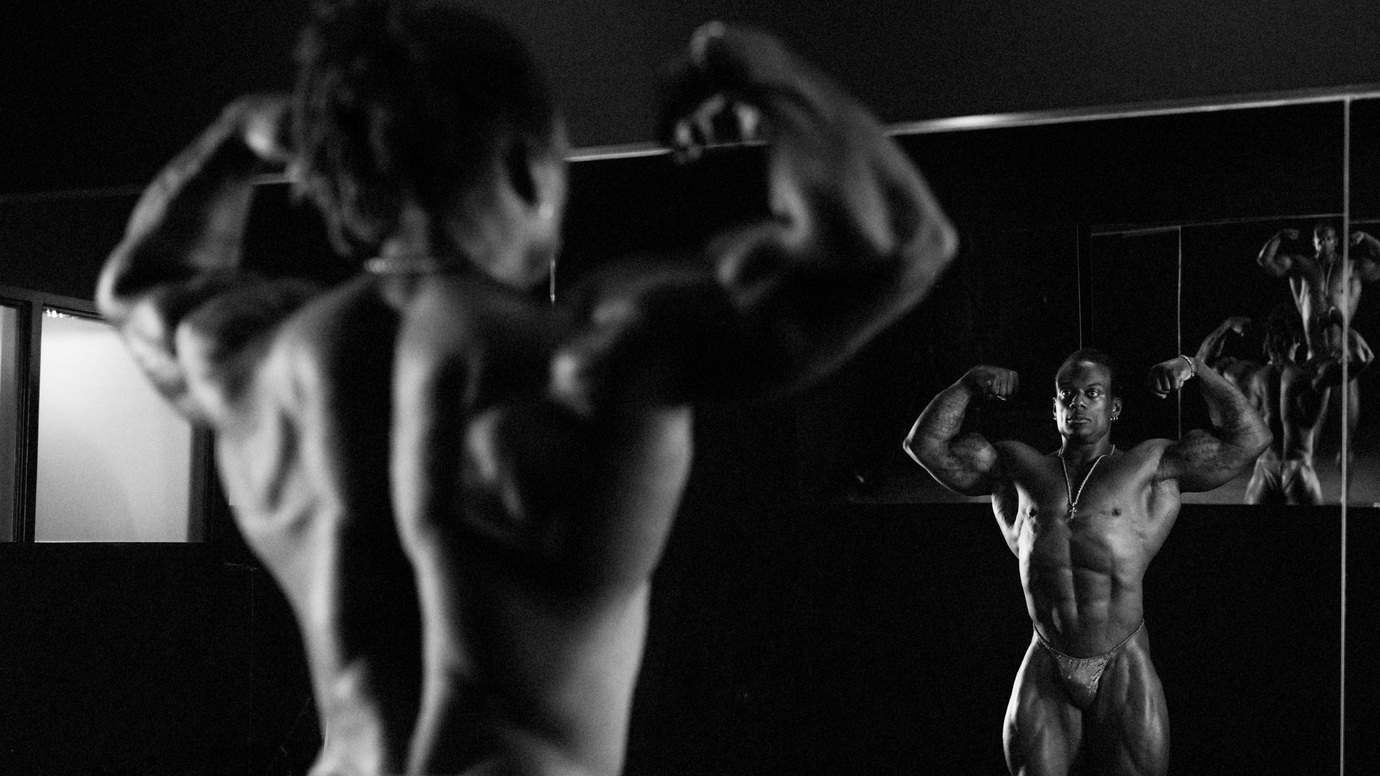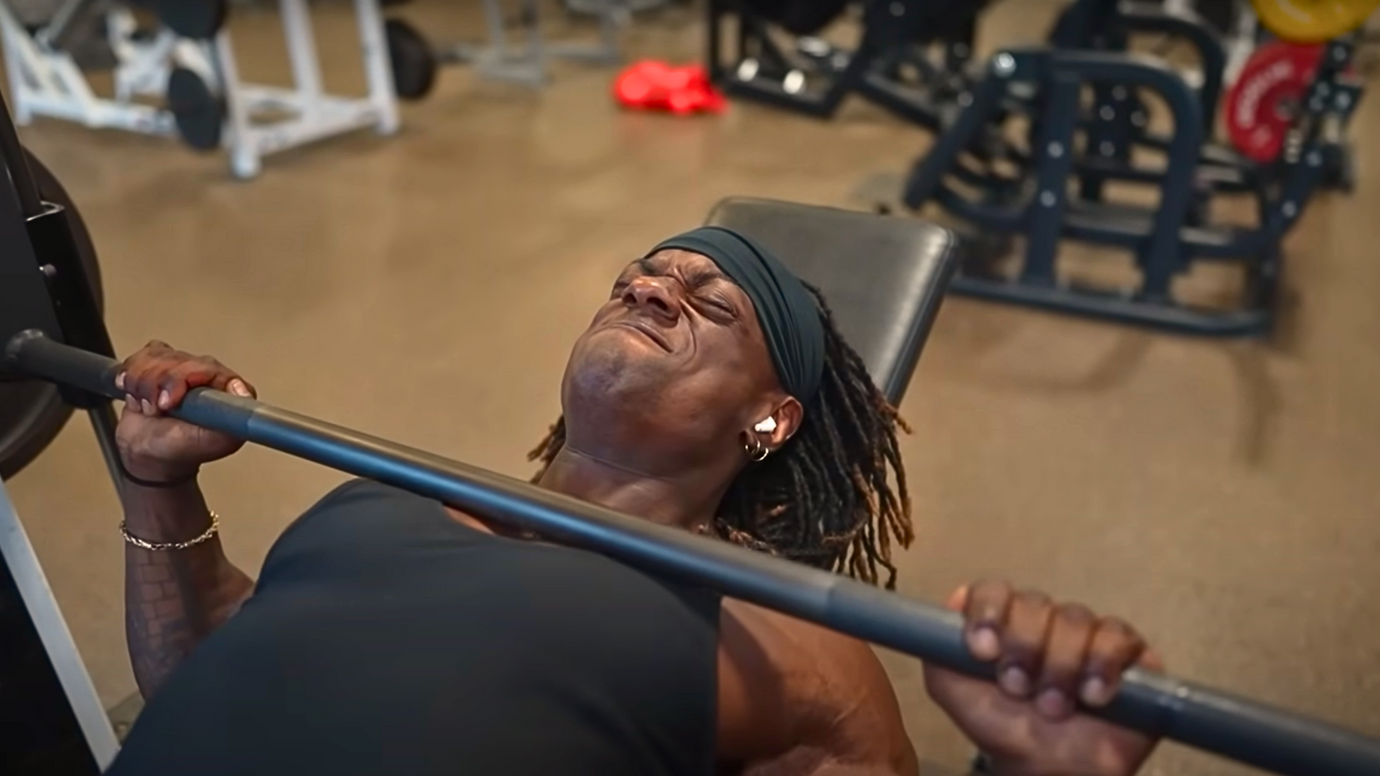3 Exercises to Get a Chiseled Chest at Home- No Gym? No Problem.
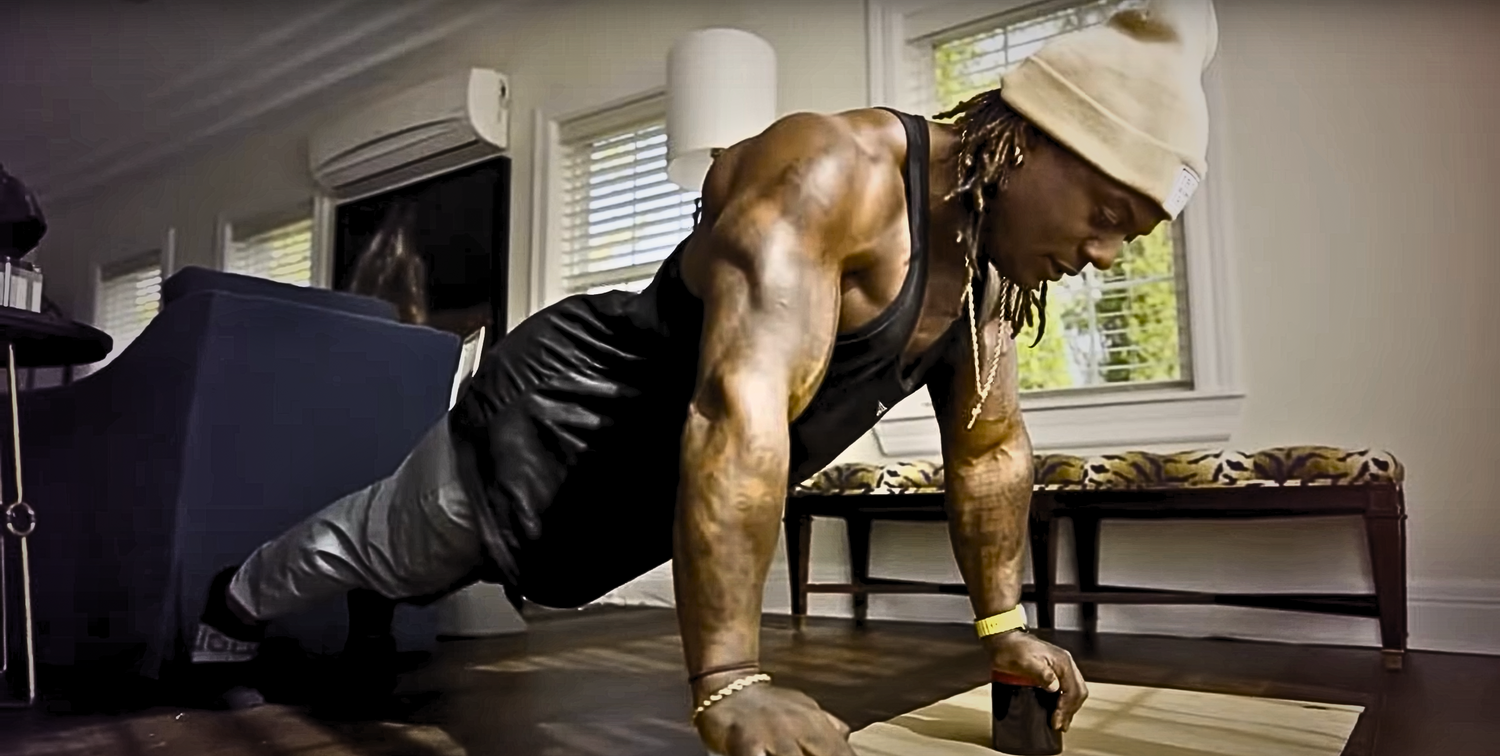
An At-Home No-Equipment Chest Workout! Learn how to hit those pecs without stepping foot in a gym or touching any weights. This home workout is just what you need if you're traveling, can't make it to the gym, or just prefer the cozy confines of your own space.
From sets and reps to the importance of reaching failure, I'm going to give you a clear understanding of how to get chiseled pecs without stepping foot in a gym.
Watch this video to watch me walk you through this workout ⬇️ Otherwise, read on.
Your At-Home No-Equipment Chest Workout

Understanding the Workout Structure
First things first, you need to understand what you'll be doing before you do it. Let's start with our sets and reps.
Sets & Reps:
When it comes to sets and reps, keep it simple. This workout is only three sets in per exercise.
The first set is about going all out until you can't do any more reps.
In the next two sets, you'll want to leave about one to two reps in the tank before calling it a day.
Once you've got that down, it's time for exercise selection.
Exercise Selection:
We'll start off with Wide-Grip Push-Ups, then switch to a Narrow Grip, and finally, we'll finish off with some Bench Dips.
Don't worry if you don't have any fancy equipment.
All you need is a couch and a couple of sturdy containers to give you that extra boost.
And if you don't have any elevation options, no problem! I'll provide some alternative exercises.

TIP (Reaching Failure):
Failure is basically where you can't perform another rep with proper form.
One cue to know that you're coming close to failure is your ability to consistently keep your tempo.
So at the end of your set, if it's harder for you to keep that tempo, you're getting close to a failing set.
For your first set, make sure you reach failure. Once you can't control that negative, you're coming really close to a failing rep.
So, are you ready to take your workouts to the next level? Let's dive in and build some muscle!

1.) Wide-Grip Push-Ups: Starting Strong
Diving into the first exercise: Wide-Grip Push-Ups.
Before doing a single push-up, you need to have your form right!
So, let's go over the correct form, variations for beginners, and advanced techniques.
Whether you're just starting or a seasoned pro, there are options for everyone.

BEGINNERS:
For beginners who are unable to do regular push-ups, here's an alternative.
- Start on your knees, ensuring you keep your body in a half-plank position.
- Maintain proper alignment by positioning your hands and elbows beneath your shoulders.
- Avoid sagging or excessive arching. Focus on lowering only the upper part of your body towards the ground.
- Hold the lowered position for five seconds before lifting back up.
This modified position mimics a push-up while providing support.
- Gradually increase the time you lower yourself until you reach muscle failure.
- In the next set, perform one to two reps just shy of reaching failure.
If you can lower yourself but struggle to push back up, you can perform a full plank and then lower yourself down before pushing back up.

ADVANCED:
Now, for those who are more advanced, let's introduce a variation. Elevating your hands.
Elevating your hands will enhance the stretch at the bottom of the movement. You can use books, yoga blocks, or anything sturdy to raise your hand position.
For those capable of regular push-ups, we'll focus on the eccentric phase.
- Take three seconds to lower yourself
- Pause briefly at the bottom, stretch, and then push back up.
- Take your first set to failure, and for the next two sets stop one to two reps before reaching failure.
After completing a set, take a minimum of two minutes to rest.
Pay attention to your breath and ensure you're fully recovered before proceeding to the next set.
Once you've completed your Wide-Grip Push-Ups, it's time to move on to Close-Grip.

2.) Close Grip Push-Ups: Targeting the Triceps
Whether you're a beginner or just looking for ways to intensify your training, you want to learn how to perform this exercise effectively. This push-up variation strengthens your triceps and engages your chest.
Close Grip form is just shoulder width apart, like a normal plank.
- Keep your core tight and your back straight.
- Slowly lower your elbows to the side, then lift them back up.
This position targets your chest and is a great option for advanced fitness enthusiasts.
If you have access to an elevated surface, like a step or bench, use it to get an even deeper stretch in your chest.
BEGINNER:
If you're a beginner and can't do this yet, don't worry! Any variation will still be effective for you.
Just make sure to keep your core tight and your back straight.
Slowly lower your elbows to the side, then lift them back up.
Remember, when performing these exercises, focus on the tempo.
Three-second count on the way down, a one-second hold at the bottom, and a one-second count on the way up.
And don't worry, even if you aren't elevated, you're still hitting chest.
You're still going to get a good stretch because if you can't do this elevated, that means you're a beginner. So anything right now is going to work really well for where you are.
Now, let's talk about judging your sets.

3.) Bench Dips: Effective Home Chest Workout
Lastly, we're going to finish off with some dips from the couch.
So head over to your couch, your stairs, or something elevated to do some dips.
Beginners can keep it simple, while advanced fitness enthusiasts will take it up a notch.

BEGINNER:
For beginners,
- Start by positioning your hands slightly outside shoulder-width, finding a balance between being too close or too wide.
- Place your hands right beside your body, ensuring a firm grip on the surface.
- As you lower yourself, keep your butt slightly in front of the bench, avoiding excessive strain on your shoulders.
- Walk your feet up and then descend.
Throughout the exercise, maintain an upright chest and push up forcefully from your palms. If needed, use your feet for assistance.
However, it is important to avoid reaching failure during dips on the bench, especially since you have already performed two exercises to failure.
For most beginners, assist yourself, aim for a satisfying burn, and then conclude.
Once again, aim for one or two reps shy of failure.

ADVANCED:
For those at an advanced level, you have a few options.
- Firstly, you can keep your feet extended straight out in front of you. Lower yourself down, then raise back up.
- Alternatively, if you have access to a footstool or another bench, you can elevate your feet to increase the difficulty.
For the first set, make sure you reach failure, and keep that in mind for the following sets.
Once you can no longer control the negative portion of the movement, you're very close to hitting failure.

⚡️Extra Tips⚡️
1.) Incorporating Tempo: Make Every Rep Count
Understand the importance of tempo in each repetition.
💥Whether you're doing push-ups, planks, or dips, maintaining control and tempo can be a game-changer for muscle engagement and growth.
2.) The Role of Tempo in Strength Training
Tempo refers to the speed at which you perform an exercise, including the lifting, holding, and lowering phases.
This is a critical element that can significantly affect the intensity and effectiveness of your workout, ultimately leading to more muscle growth.
💥By manipulating the tempo of an exercise, you can alter muscle time under tension, which is key in promoting muscle hypertrophy.
Performing exercises with a slower tempo, such as during the eccentric (lowering) phase, your muscles are under tension for longer.
💥So, don't just go through the motions during your workouts. Use tempo to intensify your workouts and maximize each repetition.
This is how we achieve the best results possible.
3.) Recovery: The Often Overlooked Component
Recovery is essential to achieving your muscle-building goals.
💧Stay Hydrated:
Staying hydrated before, during, and after your workouts helps replenish fluids lost, aids in nutrient absorption, and ensures that the body can effectively utilize the necessary components for muscle repair and growth.
🍗Nutrition:
Consuming balanced meals that include a combination of protein, carbohydrates, and healthy fats is essential.
We want to provide our bodies with the proper nutrients to support growth!
🚴🏾Active Recovery:
Light exercises, such as yoga, stretching, or low-impact activities, can promote blood flow, reduce muscle soreness, and enhance recovery.
Active recovery also helps maintain flexibility and mobility, which are important for overall fitness and injury prevention.
Remember, optimizing recovery is not just about the immediate benefits but is crucial for long-term progress and success.
Prioritize post-workout recovery to unlock your full potential and achieve your muscle-building goals.
4.) Consistency is Key: Building a Sustainable Fitness Routine
It's not just about hitting the gym hard for a few sessions; muscle growth requires a sustained effort over time.
💪🏾Frequency of Training:
The frequency of your training plays a crucial role in your fitness journey.
You need to be hitting each muscle group at least 2 to 3 times a week to stimulate adaptations within the muscle fibers.
The effectiveness of your fitness is completely tied to how committed you are to keeping up with your regular workouts.
🏃🏾♂️Habit Formation:
Habit formation is vital. Implement a routine until it becomes second nature.
This will ensure that you stick to your workout schedule even whether you feel motivated or not.
Our bodies and minds thrive on patterns; once a workout habit is established, missing a session feels out of the ordinary.
🏋🏾♂️Progressive overload:
This is the most important tip of all.
If you want to progress you need to progressively increase the weights you lift over time.
This forces your muscles to adapt and grow stronger.
Even adding small increments of weight counts as progressive overload, so don't underestimate the power of gradual progression.
Remember, these traits go beyond the gym and into every facet of life. Keep showing up, keep pushing forward, and the results will come.
To wrap up this blog post remember to stay committed and listen to your body. Whether you're focusing on at-home chest exercises or any other fitness goal, remember that fitness is a lifelong journey. With the right mindset and dedication, you can achieve your goals and lead a healthier, stronger life!
Elevate Your Training Today!
If you're ready to maximize your growth and finally achieve your dream physique, check out some of the effective resources on my website, Jonnieshreve.com.
🔥Private 1 on 1 Online Coaching
, you can find it all!
And if you’re looking to hit the stage this year, check out my Hardcore Training Contest Prep! 💪🏾


